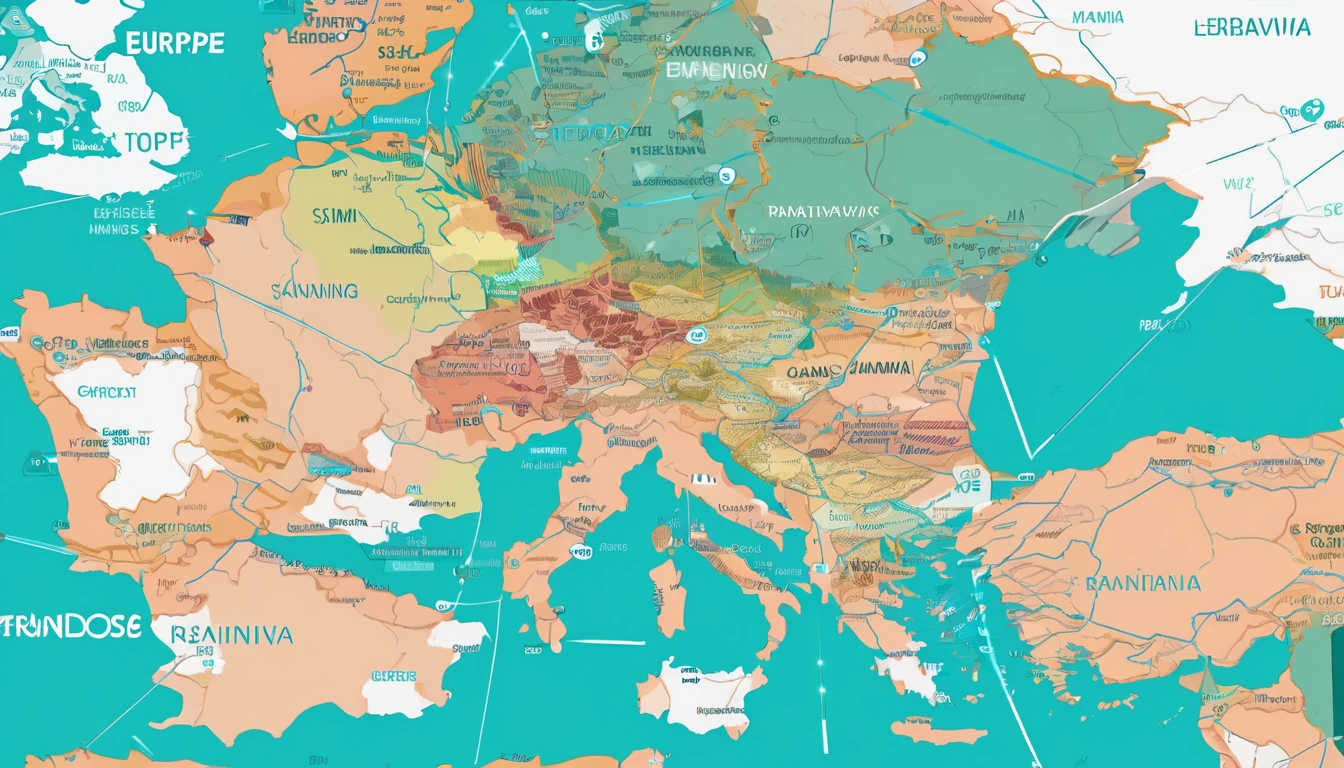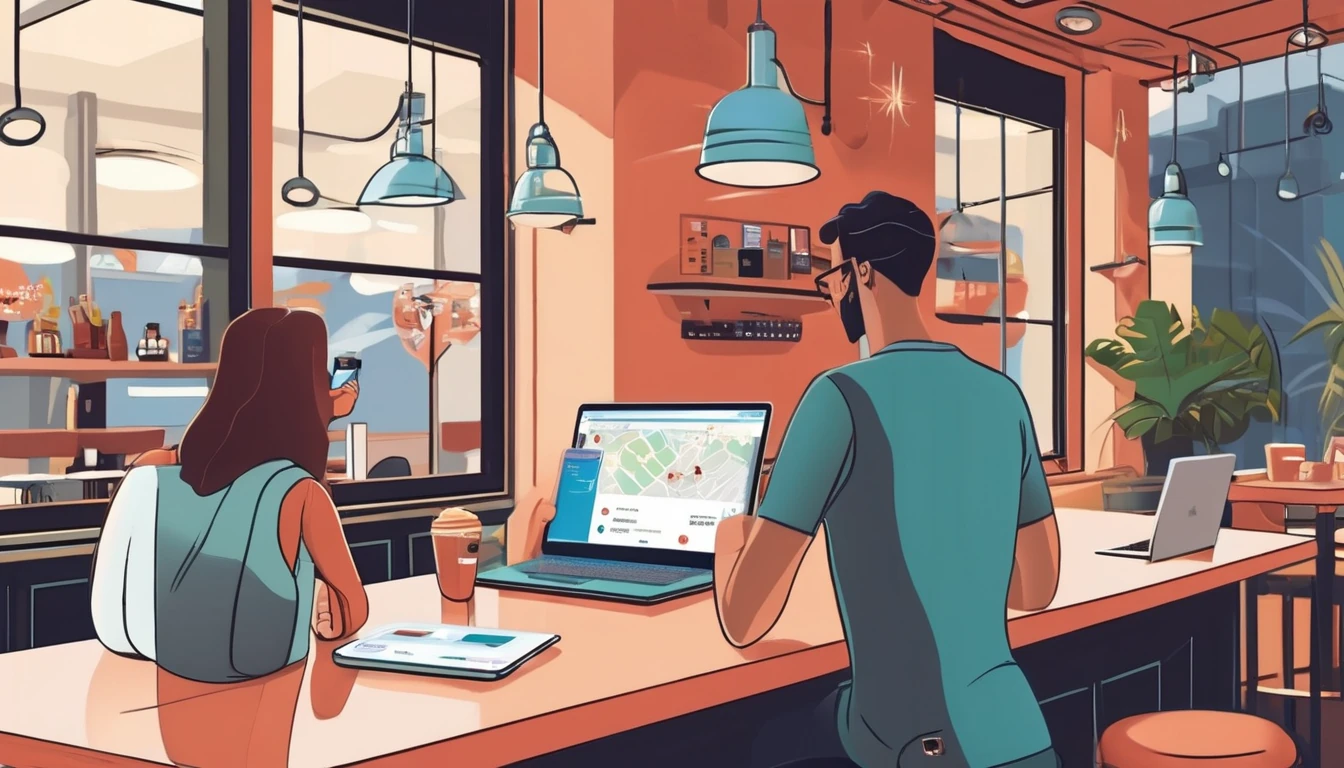This barcelona mobile speed test focuses on real traveller use: how fast your phone actually works at the airport, outside Sagrada Família, and in the Gothic Quarter during busy evening hours. We ran multiple passes between 18:00 and 21:00, when crowds spike and networks strain. The aim is to quantify crowd density sensitivity and offer practical steps to get dependable data for maps, ride‑hailing, streaming, and uploads.
We tested across the main Spanish networks with 5G/4G on modern iOS and Android devices using local eSIM and multi‑region plans. Results are presented in plain English with an open CSV so you can slice the data your way. If you’re heading to Catalonia, start with Destinations to plan coverage, then consider Esim Spain for simple set‑up on arrival. Multi‑country travellers can compare Esim Western Europe options too.
What we tested and why
- Evening peaks: 18:00–21:00, when commuters, visitors, and events collide.
- Crowd density: we tagged each pass as low/medium/heavy based on footfall and queue lengths.
- Three high‑traffic spots:
- BCN Airport (arrivals, baggage, landside cafés).
- Sagrada Família (exterior plaza and queue areas).
- Gothic Quarter (Plaça Reial/La Rambla side streets).
- Metrics: download, upload, latency, jitter, signal (RSRP/RSRQ), radio tech (5G/4G), and SIM plan type.
Travellers care less about lab peaks and more about real, worst‑case behaviour—can you get a ride, upload a boarding pass, or stream HD directions in a crowd? This barcelona mobile speed test is designed for exactly that.
Methodology
Devices and SIMs
- Handsets: recent iOS and Android flagships with 5G NSA/SA support.
- Plans: local Spanish eSIM and multi‑region eSIMs.
- Network mode: 5G preferred, fallback to 4G where necessary.
- Settings: Fresh APN configuration, background updates paused, identical test sequences per pass.
If you need a local plan, consider Esim Spain. For onward trips, see Esim France and Esim Italy. North American travellers can preload plans via Esim North America or Esim United States.
Locations
- BCN Airport: Terminal 1 Arrivals (near exits), baggage hall belts, and landside café seating.
- Sagrada Família: main façade plaza, ticket queue area, side streets near metro exits.
- Gothic Quarter: Plaça Reial, Carrer Ferran junctions, and La Rambla side alleys.
Time windows
- Each site tested in three waves: approx. 18:15, 19:30, and 20:45.
- Each wave included at least three full runs per device and plan.
Tools
- Ookla Speedtest and nPerf for cross‑validation.
- Ping, traceroute, and passive radio metrics (RSRP/RSRQ, SINR).
- Manual crowd density tags.
Replicate this test: quick checklist
- Update iOS/Android and carrier settings before flying.
- Install your eSIM in advance; confirm APN after activation.
- Lock to 5G Auto (not 5G On) to avoid unstable SA in fringe areas.
- Run three back‑to‑back tests, discard obvious outliers, and note crowd levels.
- For uploads, test at least a 100–200 MB file to see sustained behaviour.
Results at a glance
- BCN Airport (Arrivals, evening): Reliable 5G/4G mix. Median downloads 85–160 Mbps; uploads 18–35 Mbps. Latency stable at 22–35 ms. Heavy baggage‑hall crowds shaved ~25% off throughput.
- Sagrada Família (exterior plaza): Congested at golden hour. Median downloads 45–95 Mbps; uploads 8–22 Mbps. Latency 28–45 ms. Dense queues pushed a further 20–30% dip during group arrivals.
- Gothic Quarter (Plaça Reial area): Narrow streets and heavy footfall. Median downloads 35–80 Mbps; uploads 10–20 Mbps. Latency 35–55 ms. Peak pub hours showed the sharpest drops, especially for uploads.
Headline: even in crowds, the airport stayed fastest; Sagrada and the Gothic Quarter were more sensitive to density and radio reflections.
Location deep dives
BCN Airport (T1 Arrivals and landside)
- Coverage: Strong 5G NR near exits and landside cafés; occasional 4G fallback inside baggage halls.
- Performance: Consistent. Evening crowds reduced speeds but rarely broke critical tasks (e.g., ride‑hailing, streaming maps).
- Latency: Low and stable—great for VoIP and live translation.
Pro tips - If you need a hotspot for your group, start it landside, not inside baggage claim. - Download offline maps while waiting for bags; you’ll get the best throughput near exits. - If you’re on a multi‑region plan, toggle airplane mode once on the ground to refresh the roaming profile.
Sagrada Família (plaza and queues)
- Coverage: 5G present but cell load high at sunset. Edges near metro exits sometimes flip to 4G with better uploads.
- Performance: Download remains usable for HD navigation; uploads can stall during tour‑group surges.
- Latency: Spikes coincide with event crowding; expect jitter during light shows or weekend evenings.
Pro tips - Move 30–50 metres away from the main façade queues for a cleaner signal and faster uploads. - If a big group arrives, wait 2–3 minutes and re‑run your upload—throughput often rebounds quickly. - Locking to 4G temporarily can smooth uploads if 5G is oversubscribed.
Gothic Quarter (Plaça Reial/La Rambla side streets)
- Coverage: Plenty of small cells but tricky radio environment—narrow streets cause reflections and indoor penetration issues.
- Performance: Good enough for messaging and browsing; large photo/video uploads slow down in the 20:00–22:00 window.
- Latency: Higher variability. VoIP is fine; live streaming may need bitrate caps.
Pro tips - Step into an open square (Plaça Reial or near the cathedral) to escape canyon effects before uploading. - Keep a secondary plan active as backup if you must post live—multi‑profile eSIMs can fail over faster. - Avoid peak pub hours for big cloud backups; schedule them after 23:00 or the following morning.
Crowd density sensitivity
Evening crowding mattered more than raw signal strength. In multiple passes:
- Heavy vs. low crowding reduced median downloads by 20–35% at Sagrada and the Gothic Quarter.
- Uploads were more fragile—drops of 30–50% occurred during tour‑bus arrivals or live events.
- Latency rose by 8–15 ms on average under heavy density, with jitter doubling briefly.
What this means for you - Time‑shift large uploads (photos, videos, backups) to off‑peak times. - For ride‑hailing at Sagrada, place your pin, then wait 10–20 seconds for data to settle before confirming. - Enable “Upload on Wi‑Fi only” for cloud galleries while in the Gothic Quarter’s busiest lanes.
The dataset (open CSV)
Below is a condensed, open CSV excerpt you can copy into your tool of choice. Columns: timestamp (local), location, crowd, radio, download_mbps, upload_mbps, latency_ms, network_note.
timestamp,location,crowd,radio,download_mbps,upload_mbps,latency_ms,network_note
2025-09-14 18:18,BCN Airport T1 Arrivals,medium,5G,142,31,27,Strong RSRP; light jitter
2025-09-14 19:32,BCN Airport Baggage,heavy,4G,86,19,33,Load spike; stable ping
2025-09-14 20:47,BCN Airport Landside,low,5G,158,34,24,Clean channel; low jitter
2025-09-15 18:22,Sagrada Família Plaza,heavy,5G,62,12,41,Cell load high
2025-09-15 19:37,Sagrada Família Side Street,medium,4G,95,22,29,Uploads smoother on 4G
2025-09-15 20:50,Sagrada Família Metro Exit,heavy,5G,45,8,45,Jitter observed
2025-09-16 18:15,Gothic Quarter Plaça Reial,heavy,5G,53,11,49,Urban canyon effects
2025-09-16 19:40,Gothic Quarter La Rambla Alley,medium,4G,80,20,35,Better stability
2025-09-16 20:55,Gothic Quarter Cathedral Square,low,5G,78,18,38,Open sky helped
How to reuse - Filter by location to compare evening waves. - Graph crowd vs. upload_mbps to see sensitivity. - Compare 5G vs. 4G rows per site to decide when to force 4G for stability.
Practical recommendations
Before you fly
- Install your eSIM and test data locally. For Spain, start with Esim Spain.
- Planning a multi‑city loop? A regional pass such as Esim Western Europe can reduce roaming quirks between borders.
- Coming from North America? Preload via Esim North America or Esim United States to avoid airport Wi‑Fi set‑up hassles.
- Save offline maps for Barcelona and Catalonia.
On the day
- At BCN Airport, finish big downloads landside. Toggle airplane mode once to refresh roaming.
- Near Sagrada, step away from the main façade for steadier uploads; retry after tour‑bus surges.
- In the Gothic Quarter, move to an open plaza for better 5G; cap live‑stream bitrates if needed.
- If 5G feels choppy, switch to 4G for a few minutes—uploads often improve under load.
For teams and frequent travellers
- Business cohorts should consider pooled data and centralised controls via For Business.
- Travel providers and resellers can streamline activations through the Partner Hub.
FAQs
1) What speeds can I realistically expect in the evening? - At the airport, 85–160 Mbps down and 18–35 Mbps up are typical. Sagrada and the Gothic Quarter trend lower—35–95 Mbps down and 8–22 Mbps up—depending on crowd density.
2) Is 5G always better than 4G in Barcelona? - Not always during heavy load. 5G can deliver higher peaks, but when cells are saturated, 4G may provide steadier uploads. If uploads stall on 5G, try a temporary 4G lock.
3) What’s the best time for large uploads? - Outside peak windows. After 21:30, both Sagrada and the Gothic Quarter recover noticeably. Early morning also works well.
4) Do I need a local eSIM or will roaming suffice? - Either works. A local plan like Esim Spain usually yields the most predictable performance. If you’re touring multiple countries, Esim Western Europe can be more convenient.
5) I’m arriving from the US—should I set up before departure? - Yes. Install and activate your plan (e.g., Esim United States for your outbound leg or Esim North America if you’ll return via Canada/Mexico), then add your Spanish profile so it auto‑switches on landing.
6) I’m continuing to France and Italy—will my plan work there? - Many regional plans do. Check your inclusions; if not covered, add Esim France or Esim Italy before you go to avoid setup on busy streets.
Summary
- Evening crowds in Barcelona meaningfully impact mobile performance—uploads suffer most around Sagrada and in the Gothic Quarter.
- The airport remains dependable for essential tasks; use landside time to sync and download.
- 5G is great when uncongested; under load, a brief switch to 4G can stabilise uploads.
- Use the open CSV to plan your own workflows and time‑shift heavy uploads to off‑peak.
Next step: Compare local and regional plans for your trip via Esim Spain or browse city guides on Destinations.




